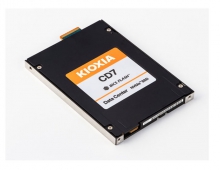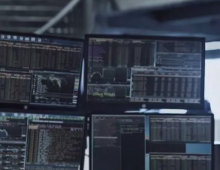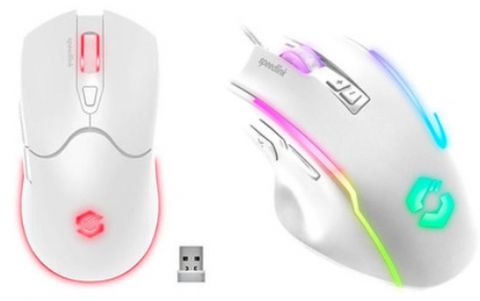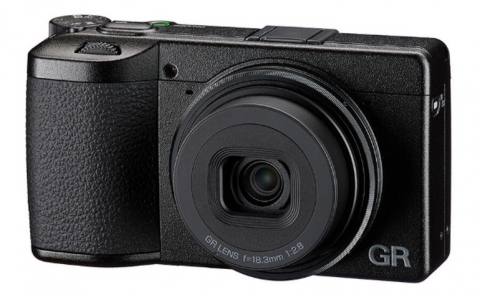
HP and Philips to Begin Licensing Video Content Protection System
HP and Philips today announced that their Video Content Protection System (VCPS), formerly called Vidi, has received approval from the United States Federal Communications Commission (FCC) and will now be offered to manufacturers through a license program.
VCPS-enabled products will allow consumers to record video from digital television (DTV) broadcasts under the FCC's Broadcast Flag regulation. VCPS is designed to be used with DVD+R, DVD+RW and DVD+R DL optical discs.
The FCC adopted the Broadcast Flag rules as a content protection mechanism for digital broadcast television. The Broadcast Flag is a digital code that can be embedded into a digital broadcasting stream and signals DTV reception equipment to prevent indiscriminate redistribution of digital broadcast content over the Internet. The use of VCPS in digital video discs and recorders makes it possible for consumers to record digital broadcasts that are protected by the Broadcast Flag onto a DVD+R/+RW disc, and enjoy TV programming protected by the FCC rules.
After July 2005, FCC regulations require manufacturers of digital video recorders to use FCC-approved content protection technology when recording U.S. digital television broadcasts that are marked with the Broadcast Flag. VCPS provides a transparent solution for consumers -- there is no change in how the customer records and views their favorite TV program -- while automatically adhering to these regulations. VCPS is easily integrated in PCs, DVD recorders and players and in optical discs. The use of this technology does not increase the cost of the manufacturing process of DVD+R/+RW discs.
"While developing the Video Content Protection System, we continually kept the perspective of the person sitting in their living room watching TV as a dominant part of the equation," said Vikki Pachera, vice president of Alliances and Business Development, HP. "The result is VCPS, which is a win-win solution for the consumer, content providers and manufacturers."
"The technical features and license terms of the Video Content Protection System show once again that DVD+RW offers the industry lower cost and higher performance," said Frank Simonis, global marketing manager, of Philips Optical Storage,. "At the same time, this new technology provides the content industry with the protection they need while maintaining the superior usability and convenience of the DVD+RW format."
Philips and HP's new technology already has generated support from a variety of industry leaders and DVD+R/+RW partners, including independent software vendors (ISVs) and chipmakers. Its robust cryptographic protection and competitive license conditions offer unique benefits to both the electronics and content industries.
More information regarding the Video Content Protection System is available at www.licensing.philips.com/vcps/index.html
The FCC adopted the Broadcast Flag rules as a content protection mechanism for digital broadcast television. The Broadcast Flag is a digital code that can be embedded into a digital broadcasting stream and signals DTV reception equipment to prevent indiscriminate redistribution of digital broadcast content over the Internet. The use of VCPS in digital video discs and recorders makes it possible for consumers to record digital broadcasts that are protected by the Broadcast Flag onto a DVD+R/+RW disc, and enjoy TV programming protected by the FCC rules.
After July 2005, FCC regulations require manufacturers of digital video recorders to use FCC-approved content protection technology when recording U.S. digital television broadcasts that are marked with the Broadcast Flag. VCPS provides a transparent solution for consumers -- there is no change in how the customer records and views their favorite TV program -- while automatically adhering to these regulations. VCPS is easily integrated in PCs, DVD recorders and players and in optical discs. The use of this technology does not increase the cost of the manufacturing process of DVD+R/+RW discs.
"While developing the Video Content Protection System, we continually kept the perspective of the person sitting in their living room watching TV as a dominant part of the equation," said Vikki Pachera, vice president of Alliances and Business Development, HP. "The result is VCPS, which is a win-win solution for the consumer, content providers and manufacturers."
"The technical features and license terms of the Video Content Protection System show once again that DVD+RW offers the industry lower cost and higher performance," said Frank Simonis, global marketing manager, of Philips Optical Storage,. "At the same time, this new technology provides the content industry with the protection they need while maintaining the superior usability and convenience of the DVD+RW format."
Philips and HP's new technology already has generated support from a variety of industry leaders and DVD+R/+RW partners, including independent software vendors (ISVs) and chipmakers. Its robust cryptographic protection and competitive license conditions offer unique benefits to both the electronics and content industries.
More information regarding the Video Content Protection System is available at www.licensing.philips.com/vcps/index.html





















